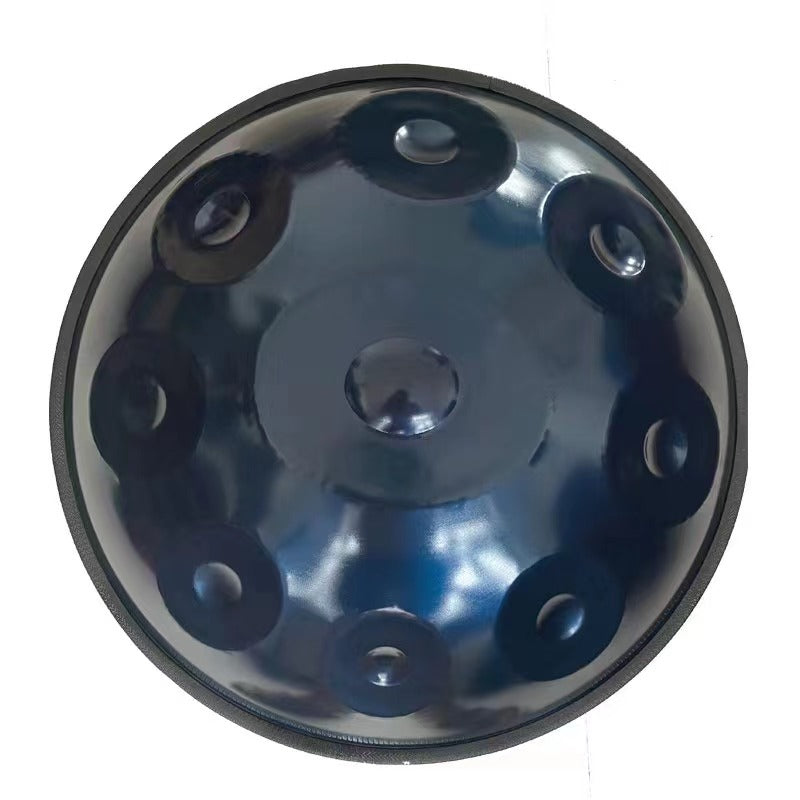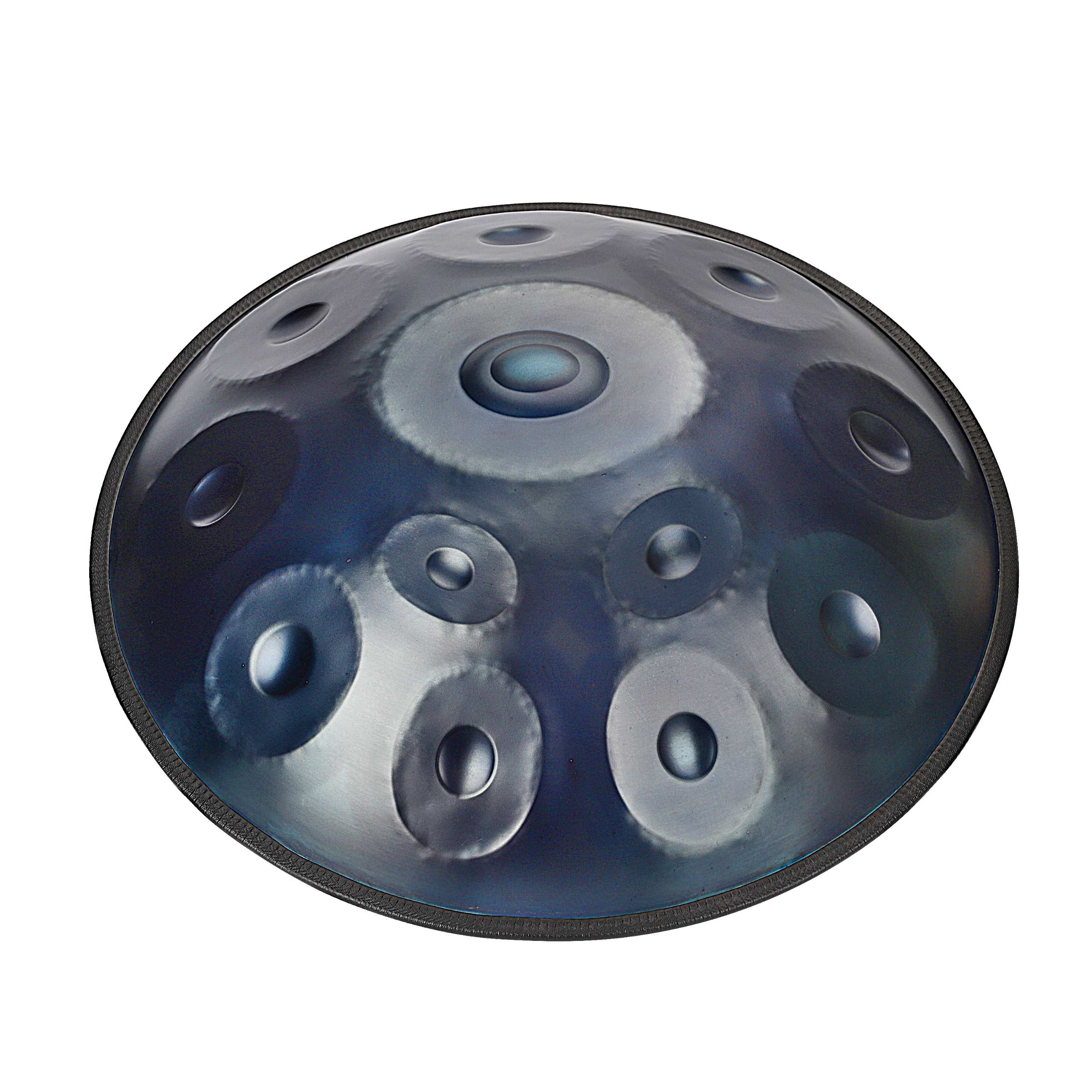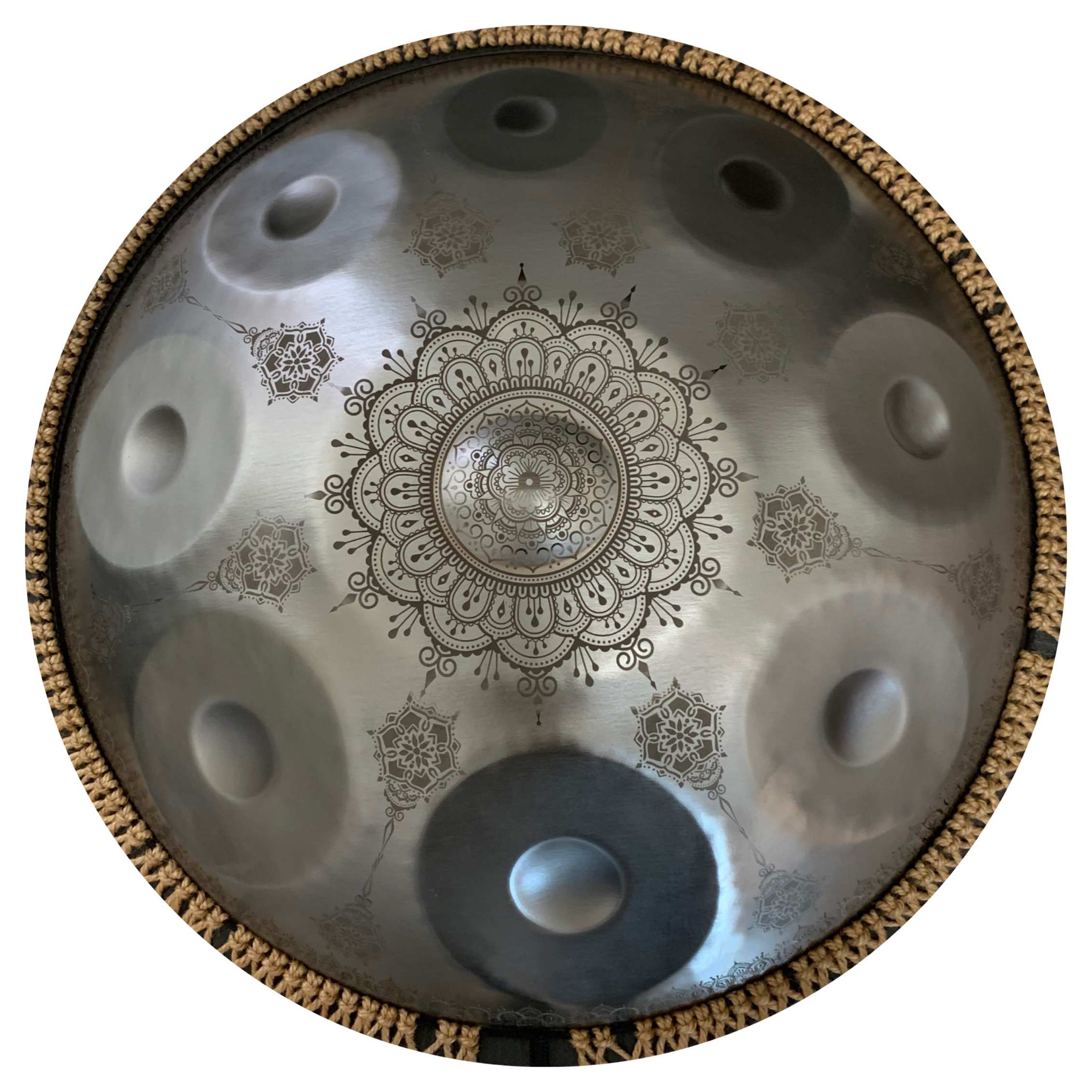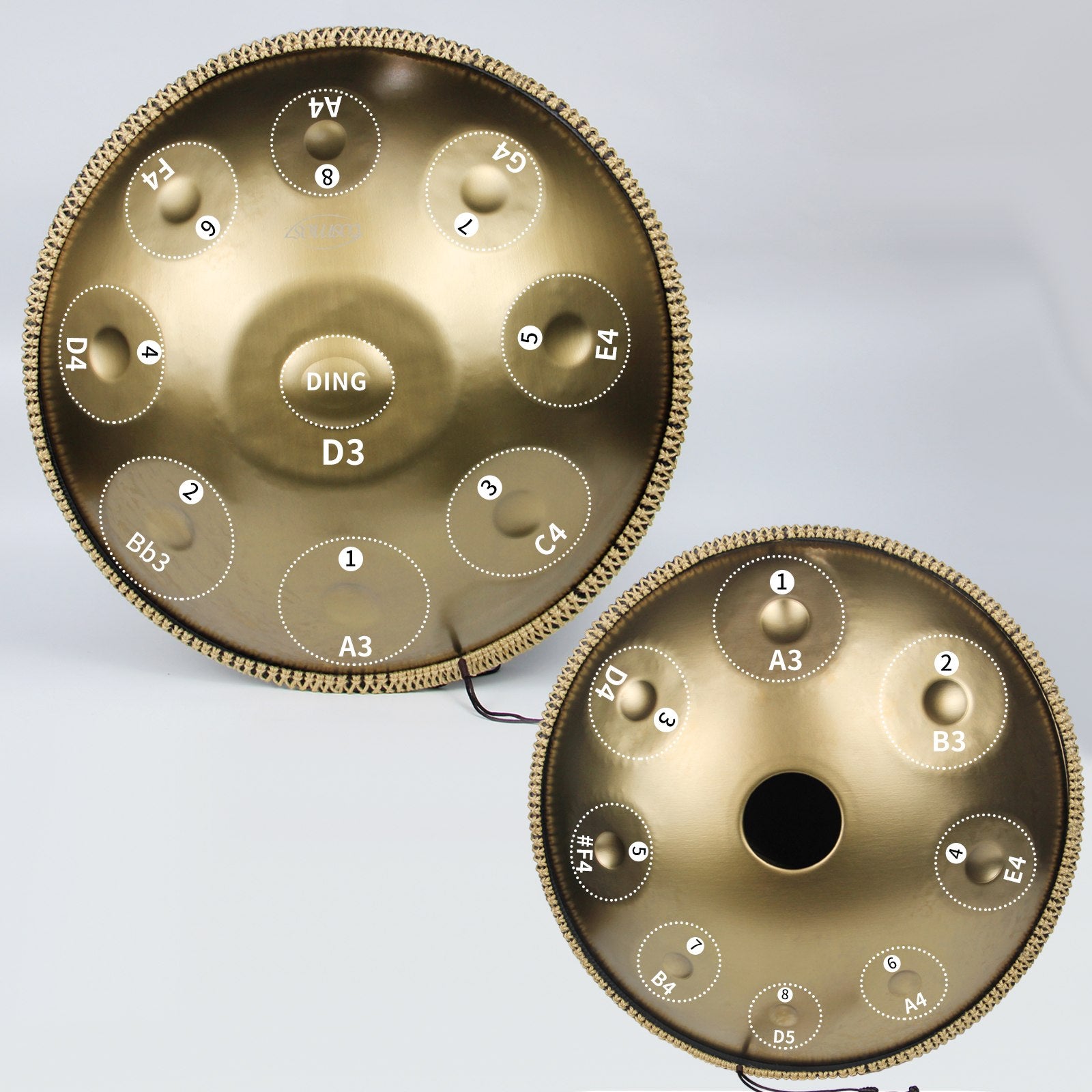Handpans have become increasingly popular in recent years for their soothing sounds and unique, meditative qualities. Among enthusiasts and musicians, a debate has emerged around the tuning of these instruments: 432 Hz versus 440 Hz. Each tuning has its proponents, and the differences between them can influence the emotional and physical impact of the music.
This article will delve into the differences between 432 Hz and 440 Hz tunings in handpans, using the Cosmos Handpan - Midnight Mandarins as an example, and help you decide which might be the best fit for you.
Understanding Handpan Tunings
Handpans are typically tuned to specific frequencies, which can affect the instrument's resonance and the listener's perception of the music. The two most commonly discussed tunings are 432 Hz and 440 Hz.
What is 440 Hz?
440 Hz is the standard tuning pitch for musical instruments in Western music. It was adopted as the international standard (ISO 16) in 1955 and is commonly used as the reference pitch for tuning instruments, particularly the A note above middle C (A4).
What is 432 Hz?
432 Hz, on the other hand, is often referred to as “Verdi’s A,” named after the famous Italian composer Giuseppe Verdi who advocated for this tuning. It is believed by some to be more in harmony with the natural world and the human body, thus offering a more relaxing and healing experience.
Cosmos Handpan - Midnight Mandarins
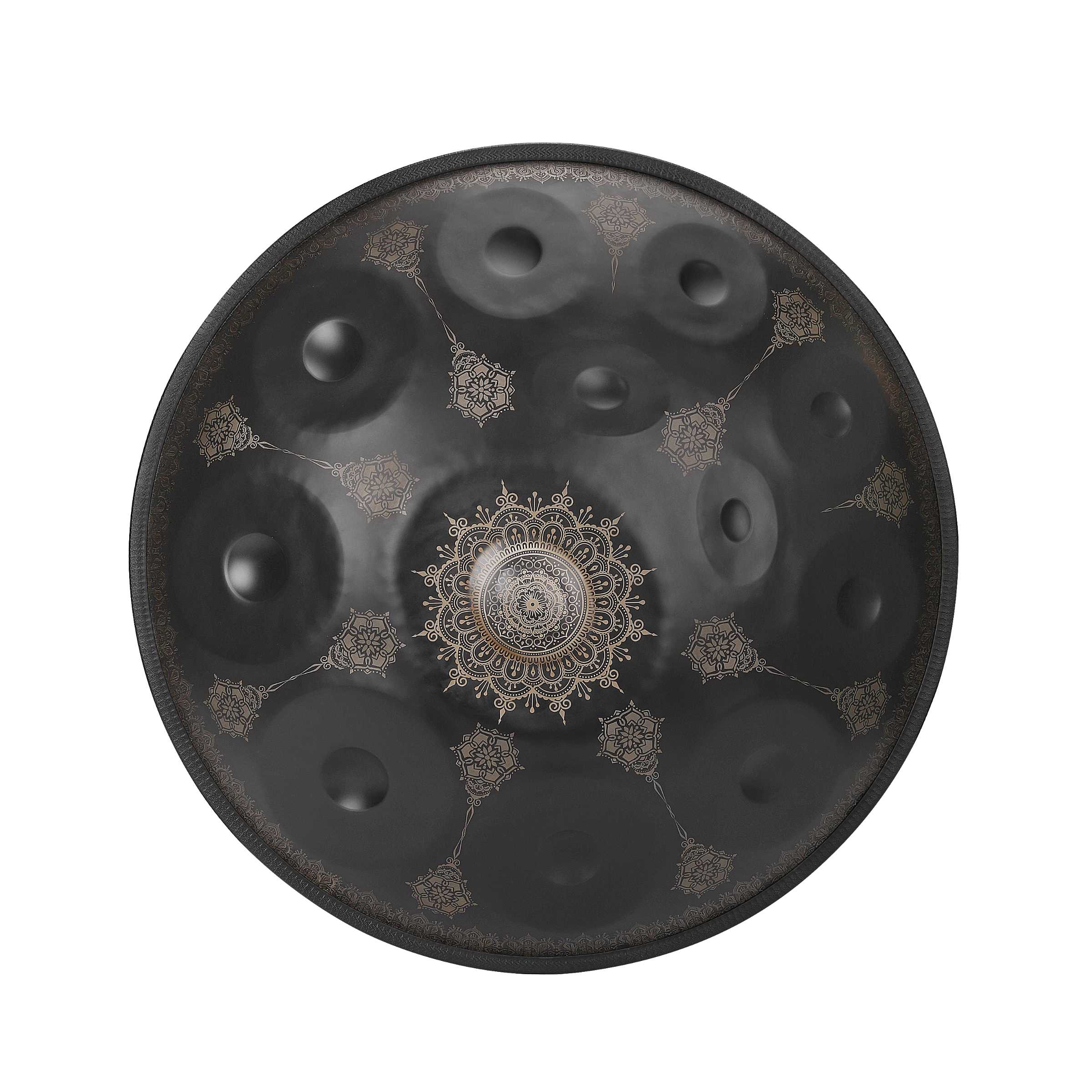
The Cosmos Handpan - Midnight Mandarins is available in both 432 Hz and 440 Hz tunings, providing a perfect example to explore the differences. This handpan offers a choice between 9, 10, and 12 notes, each providing a unique musical range.
Features of Cosmos Handpan - Midnight Mandarins
- Style: Available in 440 Hz and 432 Hz
- Number of Notes: 9, 10, or 12 notes
- Price: $890.00
- Material: High-quality steel
- Design: Ergonomically designed for comfort and ease of play
The Debate: 432 Hz vs. 440 Hz
Sound Quality and Perception
440 Hz
Proponents of 440 Hz tuning argue that it provides a brighter and clearer sound. It is the standard tuning for most Western music, making it more familiar and compatible with other instruments. The higher pitch can result in a sharper, more defined tone.
432 Hz
Those who advocate for 432 Hz believe it produces a warmer, more resonant sound that is closer to the natural vibration of the universe. This frequency is often associated with a deeper, more profound listening experience, and some claim it has healing properties.
Emotional and Physical Impact
440 Hz
Music tuned to 440 Hz is said to be more stimulating and energizing. It is the standard for orchestral and band instruments, and its familiarity can evoke a sense of normalcy and comfort.
432 Hz
432 Hz tuning is often described as calming and soothing. It is believed to align more closely with the natural frequencies of the Earth, creating a more harmonious and relaxing listening experience. Some studies suggest that music at this frequency can reduce stress and promote emotional well-being.
Cultural and Historical Context
440 Hz
The adoption of 440 Hz as the standard tuning pitch is relatively recent, having been standardized in the mid-20th century. Its widespread acceptance has made it the default for most modern Western music.
432 Hz
432 Hz has a longer historical and cultural context, with some claiming it dates back to ancient musical traditions. Composers like Verdi and even some historical instruments were tuned to this frequency. Its advocates argue that 432 Hz tuning is more in harmony with the universe’s natural vibrations.
Practical Considerations
Compatibility with Other Instruments
440 Hz
If you plan to play your handpan with other instruments, especially in a band or orchestral setting, 440 Hz is the practical choice. It ensures that your instrument is in tune with others, preventing dissonance.
432 Hz
Playing a 432 Hz handpan with instruments tuned to 440 Hz can create a clash in pitch, resulting in dissonance. However, if you are playing solo or with other 432 Hz tuned instruments, this can be a non-issue.
Availability and Customization
440 Hz
Since 440 Hz is the standard tuning, there are generally more instruments available in this pitch. Finding replacement parts or additional instruments tuned to 440 Hz is also easier.
432 Hz
Instruments tuned to 432 Hz might be less common and could require custom orders. However, as awareness and popularity of this tuning grow, more options are becoming available.
Choosing Between 432 Hz and 440 Hz
Personal Preference
Ultimately, the choice between 432 Hz and 440 Hz tuning comes down to personal preference. Some people are more attuned to the bright, clear sounds of 440 Hz, while others prefer the warm, resonant tones of 432 Hz.
Intended Use
Consider how you plan to use your handpan. If you are performing with other musicians, 440 Hz might be the practical choice. For solo play, meditation, or sound therapy, 432 Hz could provide a more enriching experience.
Experimentation
If possible, try playing or listening to handpans tuned to both frequencies. This firsthand experience can help you decide which tuning resonates more with you.
The Cosmos Handpan - Midnight Mandarins Experience
The Cosmos Handpan - Midnight Mandarins offers flexibility by providing options for both 432 Hz and 440 Hz tunings. This allows players to choose based on their personal preference and intended use.
Features Breakdown
- 9 Notes: Ideal for beginners or those who prefer a simpler, more focused musical range.
- 10 Notes: Provides a slightly broader range, suitable for more complex compositions.
- 12 Notes: Offers the most versatility, perfect for advanced players looking to explore a wide array of musical possibilities.
Why Choose Cosmos Handpan?
The Cosmos Handpan is crafted from high-quality steel, ensuring durability and a rich, resonant sound. Its ergonomic design makes it comfortable to play for extended periods, and its versatility in note options and tuning styles means there is something for everyone.
Price Point
At $890.00, the Cosmos Handpan represents a solid investment in a high-quality instrument. Given its craftsmanship and the flexibility it offers, it is a worthy choice for both beginners and experienced musicians.
Conclusion
The debate between 432 Hz and 440 Hz tunings in handpans is not just about preference but also about the kind of experience you seek from your music. Whether you lean towards the bright, energetic sounds of 440 Hz or the warm, resonant tones of 432 Hz, each offers unique benefits. The Cosmos Handpan - Midnight Mandarins provides an excellent opportunity to explore these differences, thanks to its high-quality build and flexible tuning options.
Key Takeaways
- 440 Hz: Standard tuning, brighter and clearer sound, better compatibility with other instruments.
- 432 Hz: Warmer, more resonant sound, believed to have calming and healing properties, less common but growing in popularity.
- Cosmos Handpan: Offers both tuning options, available in multiple note configurations, high-quality build, priced at $890.00.
In the end, the best way to determine your preference is to experience both tunings. Whether for solo meditation, sound therapy, or musical performance, the right handpan tuning can enhance your musical journey and provide a richer, more fulfilling experience.


